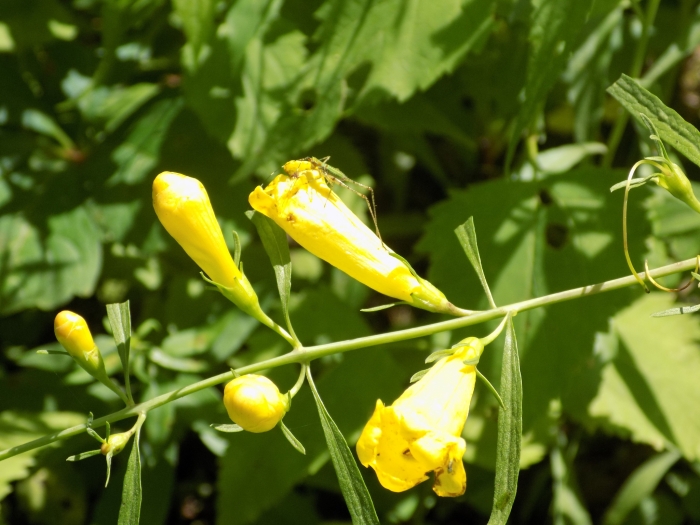Smooth Yellow False Foxglove
(Aureolaria flava)
Smooth Yellow False Foxglove (Aureolaria flava)
/
/

Blake Bringhurst
CC BY 4.0
Image By:
Blake Bringhurst
Recorded By:
Copyright:
CC BY 4.0
Copyright Notice:
Photo by: Blake Bringhurst | License Type: CC BY 4.0 | License URL: http://creativecommons.org/licenses/by/4.0/ | Rights Holder: Blake Bringhurst | Publisher: iNaturalist | Date Created: 2016-07-12T14:23:40-07:00 |















































Estimated Native Range
Summary
Aureolaria flava, commonly known as Smooth Yellow False Foxglove, is a deciduous perennial herb native to open woodlands and forest edges in the Eastern United States, including regions from New York to Florida and west to Texas. It typically grows to a height of 1-5 feet (0.3-1.5 meters) and a width of 1-2 feet (0.3-0.6 meters), which is more compact than the original description. The plant features lanceolate leaves and produces tubular, bright yellow flowers that are particularly showy from late summer to fall, attracting pollinators such as bees and hummingbirds.
Smooth Yellow False Foxglove is valued for its vibrant yellow blooms and its ability to thrive in dappled shade, making it an excellent choice for woodland gardens, shaded borders, and native plant gardens. It is relatively low maintenance, requiring minimal watering once established, and prefers well-drained soils with a preference for loamy or sandy textures. While it is not commonly used in urban settings, its adaptability makes it a candidate for naturalized areas. Gardeners should note that Aureolaria flava is a hemiparasitic plant, meaning it obtains some of its nutrients from the roots of other plants, typically oaks. This unique relationship should be considered when choosing a planting location.CC BY-SA 4.0
Smooth Yellow False Foxglove is valued for its vibrant yellow blooms and its ability to thrive in dappled shade, making it an excellent choice for woodland gardens, shaded borders, and native plant gardens. It is relatively low maintenance, requiring minimal watering once established, and prefers well-drained soils with a preference for loamy or sandy textures. While it is not commonly used in urban settings, its adaptability makes it a candidate for naturalized areas. Gardeners should note that Aureolaria flava is a hemiparasitic plant, meaning it obtains some of its nutrients from the roots of other plants, typically oaks. This unique relationship should be considered when choosing a planting location.CC BY-SA 4.0
Plant Description
- Plant Type: Herb
- Height: 3-6 feet
- Width: 1-2 feet
- Growth Rate: Moderate
- Flower Color: Yellow
- Flowering Season: Summer, Fall
- Leaf Retention: Deciduous
Growth Requirements
- Sun: Part Shade
- Water: Low, Medium
- Drainage: Slow, Medium, Fast
Common Uses
Bee Garden, Bird Garden, Butterfly Garden, Low Maintenance, Showy Flowers
Natural Habitat
Open woodlands and forest edges in the Eastern United States
Other Names
Common Names: Smooth False Foxglove, Yellow False Foxglove, Gérardie Jaune
Scientific Names: , Aureolaria flava, Aureolaria flava var. flava, Gerardia flava, Agalinis flava, Aureolaria calycosa, Aureolaria flava var. reticulata, Aureolaria flava subsp. reticulata, Aureolaria flava subsp. typica, Dasistoma pubescens
GBIF Accepted Name: Aureolaria flava (L.) Farw.